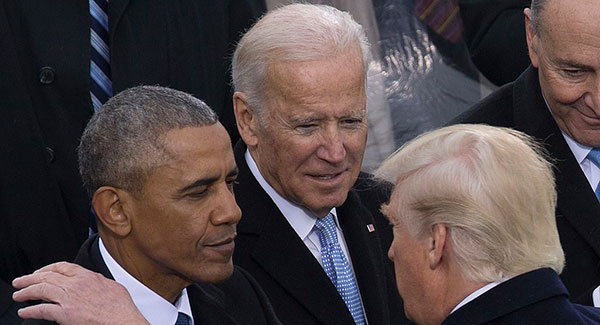Out of curiosity the other day, I decided to Google the words “Trump + authoritarian + New York Times.” I discovered 134 entries.
Wow. In virtually every case, the association was positive, as in “Donald Trump is an authoritarian.”
Then, I noticed a Google alert that my search had omitted some entries “very similar” to the ones already displayed. Lured by Google’s implicit invitation, I opted to see all the omitted entries as well.
All told, Donald Trump has been linked to “authoritarianism” 386 times in the so-called “paper of record”!
What makes this so strange is the Trump phenomenon in modern politics is the exact opposite of authoritarianism.
If the Trump presidency meant anything, it meant less government. Specifically, lower taxes, less regulation, and fewer (potentially war-causing) foreign entanglements.
True, Trump is no libertarian. He believes in federal funding of infrastructure and industrial policy—but maybe smarter and less intrusively so than Barack Obama or Joe Biden.
Typical Trump supporters are also anti-government—even more than Trump is. They were more suspicious of Anthony Fauci and the CDC, more opposed to lockdowns, vaccine mandates, and mask mandates during the Covid pandemic, more suspicious of the “deep state,” and less trusting of federal law enforcement and intelligence agencies.
Trump's appointments to the Supreme Court have given us rulings that are consistent with an anti-authoritarian approach to public policy. Among recent major decisions, the court has strengthened Second Amendment rights, limited the reach of the regulatory state, and protected the right of shopkeepers and merchants to follow their conscience rather than bow to the dictates of woke regulators.
You might suppose that the Court’s decision rejecting affirmative action at Harvard is an example of too much government intervention in the affairs of a private organization. Yet the federal government has been pressuring the private sector to engage in affirmative action ever since the days when John F. Kennedy was president. The latest Court decision begins to put limits on that intrusion.
The overturning of Roe v. Wade might be seen as a case of the Court’s failure to protect the individual from the state. But half the country doesn’t see the issue that way. Instead of being an arm of the federal government making abortion decisions for the entire country—the Court chose to let the people decide.
It was under the administration of Donald Trump that you gained the right to talk with your doctor by phone, email, Zoom, Facebook, and Skype. Under Obama, all that was illegal. Because of a Trump executive order, employers today can buy individually owned health insurance for their employees—insurance they can take with them from job to job and in and out of the labor market. If employers did that under Obama, they could be fined $100 per employee daily.
Under Biden, we are getting predictable backsliding—a reversion to the regulatory state. Thanks to a Trump executive order, 3 million families have “short-term” health insurance—plans that meet their medical and financial needs for as little as one-half the premiums charged in the Obamacare exchanges. Biden is going to take that freedom away—beginning next January.
But the most unsettling sign of impending authoritarianism is not the expansion of the regulatory state. It’s the willingness of federal law enforcement and our intelligence agencies to toss aside impartiality and directly interfere with democratic government.
As the Durham report makes clear, under the Trump administration, the real threat to democracy came not from the president or from an unruly mob on January 6th. It came from law enforcement and intelligence agencies intervening to change election results and undermine a duly elected presidency—along with help from the mainstream media and Big Tech.
It may surprise some readers to know that The New York Times was our nation’s first real newspaper. Prior to its founding, many newspapers had a political party’s name in their title, such as “Democrat” or “Republican.” Some of these newspaper names have survived even today. Regardless of the name, almost all the newspapers at the time were political party propaganda. The New York Times was the first newspaper that pledged to report impartial news.
All that changed with Donald Trump. When Times writers weren’t calling him “authoritarian,” they called him a “traitor” (270 times). When they weren’t calling him a traitor, they routinely called him other names, including “racist,” “misogynistic,” “xenophobic,” “homophobic,” and occasionally even “anti-Semitic.” These charges were just as baseless as the charge of treason.
At first blush, the Times today looks very much like the newspapers it replaced almost 200 years ago—as an organ of the Democrat Party. But the reality is worse than that. The Times, more often than not, is acting as the government’s newspaper.
The New York Times once printed the Pentagon Papers and fought for its freedom to do so against the U.S. government’s attempt to censor it all the way to the Supreme Court. Today, it rarely publishes anything that would be embarrassing to the FBI, the CIA, the Biden family, or the government in general.
Sadly, it is the Times itself that is proving to be a friend, not an enemy, of authoritarian tendencies in our body politic.












